December 2023
There will be at least 15,000 instances of viruses leaping between species over the next 50 years, with the climate crisis helping fuel a potentially devastating spread of disease that will imperil animals and people and risk further pandemics.
(Oliver Milman, 2022, The Guardian)

A short post-operative recovery turned into something of a prolonged and unexpected medical odyssey with the discovery of two interconnected, and rare, autoimmune conditions that stem from my first bout of covid in 2020 and subsequent re-infections. I’m only now beginning to adapt to my ‘altered state of being’ and am in the process of developing a new body of work in response to the environmental issues that underpin my illness. Scenes From Zoonotica takes an autoethnographic approach to zoonoses, the spread of pathogens between animals and people, and how climate change and environmental breakdown is exacerbating this global health challenge. In my case the trigger was the original covid variant, and now a pathogen that most likely began life in a bat in China is a permanent resident and I am its bodily host. Ironic given that much of my arts practice has been in the medical domain; I have become the subject of my practice in an all too biological way. Scenes From Zoonotica can be positioned under the auspices of Deluge, enabling for the expression of a more subjective voice that will sit alongside my continuing public facing environmental projects.
May 2023
Bruises the colour of Lily petals, which wither and fall from the vase beside me as I recover from major chest surgery for the removal of my tumour: a long operation but a successful one. Breath slowly returns to my collapsed lung and the pain from the incisions lessens each day. Lilies are said to have a ‘funereal’ smell but I love their heavy presence, and ironically they remind me that having prepared for death, death is no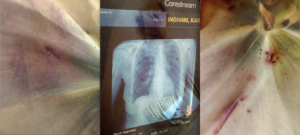 t yet prepared for me. Serious illness distorts time and leads to deep reflection; priorities shift, perspectives expand, and with recovery comes re-evaluation. Over the coming months I’m moving away from academic ties and research projects and focusing on more personal projects around the human condition (a return to earlier practice). I’ll also be developing and expanding my interdisciplinary environmental commitments.
t yet prepared for me. Serious illness distorts time and leads to deep reflection; priorities shift, perspectives expand, and with recovery comes re-evaluation. Over the coming months I’m moving away from academic ties and research projects and focusing on more personal projects around the human condition (a return to earlier practice). I’ll also be developing and expanding my interdisciplinary environmental commitments.
It may be some months till the blog is updated. 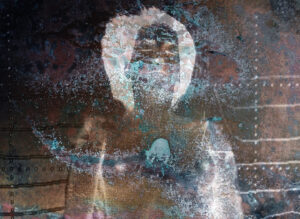
January 2023

The Passage of Air: we transport the air we breathe as much as it transports us: breath to breath, surface to surface, the cold and damp leaving ephemeral traces of our expirant being. Beyond the sea blue curtains of my hospital bed is a window, and in the distance the sea. The tide is in the tide is out. In, out…like breathing, taken for granted until its flow is blocked. Christmas eve and Christmas day come and go revealing an unwanted festive surprise. A rare chest tumour, a Thymoma, and breathing complications that most probably began in 2020 with covid. For three years I have felt the presence of a shadow in my chest, which at times has revealed itself as a dark mouldy pattern on the walls and windows of my home. The window, through which the sea calls me to swim and the seabirds wade and glide. The Latin word spirare means to breathe and is related to transpire, respire and expire. It’s also related to spiritus or spirit, which can mean breath, air, wind, soul or ghost. I find myself transported back to my previous practice in early 2000, which focused on the relationship between Spiritualism, family photography and medical imaging. Deaths Witness (Ffotogallery 2000) played with the histories and tensions between spiritual belief and scientific rationalism, as allegorised in my stills and film works through a fictionalised deconstruction of the Turin Shroud. How strange that many of the themes and concepts I explored then have returned to haunt me. Over the coming months, or however long I have the creative energy, I will visually story-weave the passage of air as it moves in and out of my being, across surface and memory.
There are mould spores on the glass. The condensation from my laboured breath reveals them. Beyond is the sea and surrounding seagrass meadows and marshy tussocks of the estuary. The tide is in the tide is out. The picture is ambiguous and constantly changing. There are many layers to the picture. Even after the mould is cleaned and the window wiped palimpsestic traces of former marks and meanings remain. The lens of the camera frames the view: the focus changes moving between different visual planes. My creative practice helps me to order the disordered. A reassuring illusion of control while I wait for the tests, scans and surgery that will determine if and when my breath is disease free and able to continue its journey.
July 2022
In partnership with Swansea Council the old Cranes music shop has been turned into the Arts Arkade, a pop-up digital experience that brings young people into contact with computational thinking, hip-hop, dance, visual arts and virtual reality. I’ve been observing the progress of the Arkade since last autumn and have been in discussion with its creative director Tunde Olatunji, a PhD student with Swansea University’s Computational Foundry. Tunde is also a founding director of the company Kombat, with collaborator Dr. Becky Inkster, a neuroscientist. Kombat is a skills and training based creative digital platform that uses computational thinking, hip-hop, movement, and visual arts to empower self-expression and improve young peoples self-esteem and mental health. The first event, held in June was Hip-Hop 4 Health, workshops and talks exploring how music, movement and virtual and augmented reality can help young people’s mental health. Collaborators Prof Ann John and Harley Morgan were also involved in the project and the aim is to build on the success of the pilot event to develop more creative workshops and skills session in the following months.
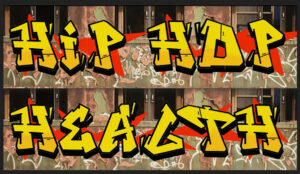
I’m particularly keen to see if we can create a project/s that addresses youth mental health in relation to climate anxiety. My research and studio practice has been steadily focussing on new approaches and methods that combine the digital and physical realms (the phygital) that are collaborative and accessible. For the past 6 months I’ve been holding open studio sessions to the public once a month, to test new works and to use the studio space as more of a hub for public engagement.

New photographic and copper print works explore the relationship between the fragile hinterlands between soil and water, sea and shore, permeable and transitory spaces. Once again I’m using copper as a material object that carries with it a dense and palimpsestic narrative. I’m also beginning to experiment with using direct contact printing from nature in the method of the anthotype. The next stage will be to scale up the process and to begin work on the accompanying film.
November 2021
#Be Seen is nearing the end with all three films completed and now available online as part of the Adolescent Data Platform. We exhibited films and photography from the project at Volcano Theatre in Swansea, one of our project partners, and other public engagement events are planned for 2022.
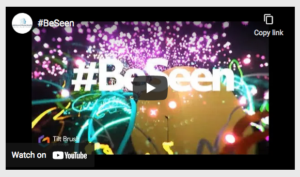
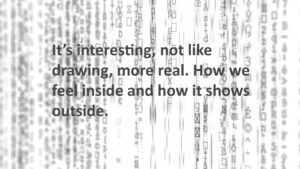
The #Be Seen project team are in the process of developing an online tool kit, which will also be made available in early 2022.
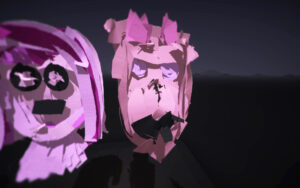
Despite the year long (covid) delay in the project, it has been fantastic to be co-producer on such a genuinely interdisciplinary undertaking, bringing together artists, virtual reality technologists, data scientists, medicine, and, most importantly, young people themselves.
https://adolescentmentalhealth.uk/BeSeen
June 2021
After a long delay due to the covid pandemic the Medical Research Council-Arts and Humanities Research Council project ‘BE SEEN’ is finally underway. This arts and youth mental health project, my second collaboration with Prof Ann John and Swansea Medical School, builds on previous research using virtual reality arts tools to help young people explore their mental health in a safe, creative environment.
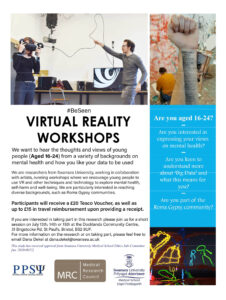
This particular project is targeting normally difficult to reach groups such as refugees and asylum seekers in Swansea and the gypsy Roma community around Bristol. The Swansea workshop, which took place a few weeks ago, was fully booked and we had plenty of positive feedback.
For this project we are adding a new element in the form of a mini ‘image crit’, based on the kind of tutorial or seminar used in an art school, and focusing on images from social media that may lead to self-harm, and how these images can be better ‘read’ and understood and subsequently replaced by positive body imagery.
Bristol workshops take place in July and will be followed by workshops in Plymouth in August.
May 2021
With covid restrictions finally easing I have come to the end of ‘Contaminated Fragments’ and have concluded the series with an image from a nursing home I visited during my research trip to Japan in 2019. ‘Wards A to C’ has a certain poignancy in the three colour coded ward nightgowns hanging to dry by a window with no view. This is how most elderly people in care must have felt during their long covid isolation, if in fact they were fortunate enough to survive the virus, their view of the wider world completely restricted. I’m now moving into full swing on the Medical Research Council collaboration ‘Be Seen’ with Prof Ann John, my arts and medicine collaborator for the past four years. This interdisciplinary youth mental health project (see March 2020 blog for details) will focus on virtual reality workshops with partners in Swansea, Bristol and Plymouth between June and August, culminating in a film, online digital toolkit, and research papers and publications. More to follow over the coming months.
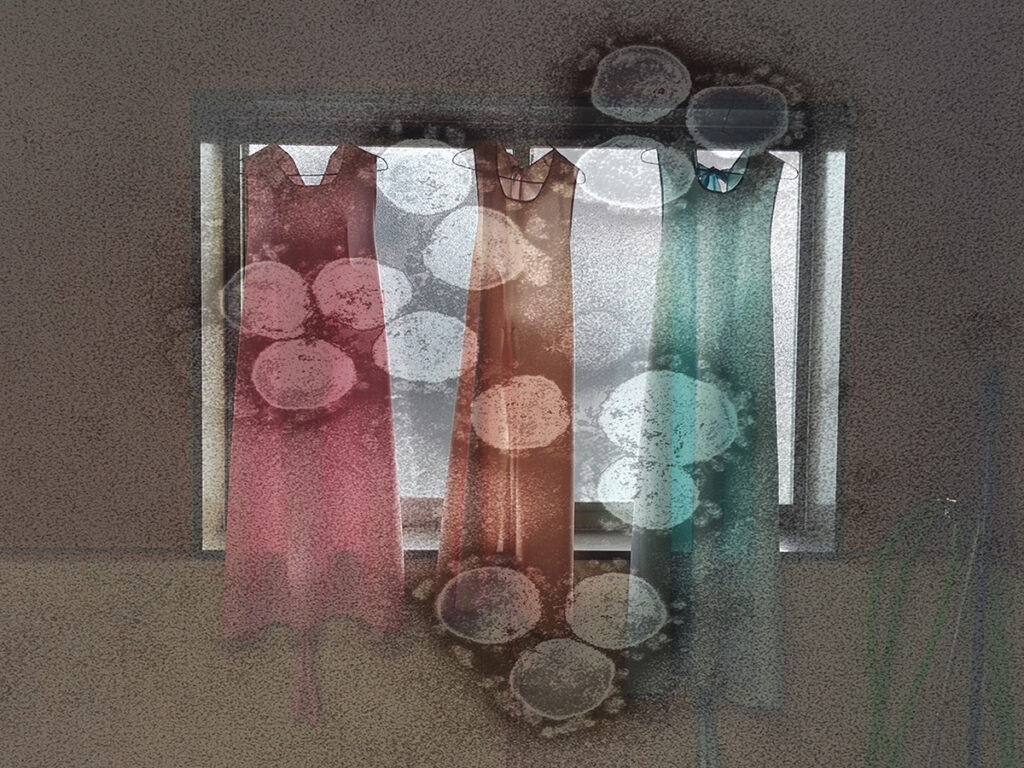
January 2021
After a long hiatus due to the ongoing covid crisis I’m slowly getting projects underway again. The Medical Research Council collaboration with Prof Ann John, ‘Be Seen’, has been stuck in background preparation and development with the key participatory virtual reality workshops delayed yet again because of covid lockdown and restrictions. We hope to be up and running by the spring. In the meantime I have been working on a new series of still images and short films in response to what has been a challenging year.
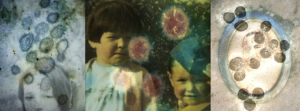
‘Contaminated Fragments’ is a series of appropriated family photographs, real and imagined, that explore the fragile and mutating surfaces of photographic prints and funerary portraits ‘infected’ with the covid virus.
Just as the natural molds and bacteria eat away at the materiality of the objects, so too the covid cells allegorically envelop and obscure the identity and presence of the subject. This new work is a return to older projects that touch on the relationship between death and family photography, and contemporary re-imaginings of the vanitas and memento-mori.
March 2020
Major new project and COVID update. In these uncertain and troubling times I’m having to put projects on hold with one exception, which is to announce that I’m thrilled to be collaborating with Prof Ann John again on a significant new arts and youth mental health project with funding from the Medical Research Council, The Arts and Humanities Research Council and the Economic and Social Research Council. The project, ‘Be Seen’: an arts-led participatory approach to understanding ‘big data’ in young people’s mental health and use of images by young people, runs from April 2020 for 12 months. The coronavirus crisis means that physical arts activities will have to be postponed until the autumn, but in the meantime the research team can work remotely and via video conferencing to get the ethics approval and project design and methodology into full swing. The press release with full details follows:
MRC/AHRC/ESRC ADOLESCENCE, MENTAL HEALTH AND THE DEVELOPING MIND: Engagement Awards
‘Be Seen’: an arts-led participatory approach to understanding ‘big data’ in young people’s mental health and use of images by young people
Led by: Professor Ann John, Medical School, Swansea University
Co-Investigators
Professor Karen Ingham, Interdisciplinary Artist
Professor Louise Jane Condon, College of Human and Health Sciences, Swansea University
Dr Ashrafunnesa Khanom, Institute of Life Science Medical School, Swansea University
Collaborative Organisations:
MQ Mental Health, Volcano Theatre , Fotonow , Plymouth Youth Services, Discovery Student
Volunteering Service, Ethnic Minorities & Youth Support Team Wales, Orygen, Plymouth City Council
Summary:
‘Big data’ is a buzzword in many areas of our lives. The rapid linkage of information from a wide range of sources – health, social media- has resulted in hope for a new era of research into young people’s mental health. The Adolescent Mental Health Data Platform (ADP) aims to harness this step-change bringing together multiple sources of ‘big data’ anonymously and securely in one place, protecting young people’s privacy. The successful ’Be Heard’ initiative brought together the voices of young people affected by mental health issues and directs the type of content we create around this data. This newly funded project will now develop this initiative into ‘Be Seen.’ A series of workshops will be held to bring young people aged 16-24 together with professionals from arts, data science and medicine. Young people are keen to share their stories and now do this predominantly through imagery (both photography and moving images/ videos). These workshops will equip young people with creative thinking skills, to discuss issues such as ownership of images and the tension between the intent behind a post and it’s interpretation by those viewing it. There will also be discussions on the use of their data using our real ‘big data’ projects as examples. Workshop participants will include those who have experienced mental health problems or who have self-harmed. One workshop will be held with young people from the Gypsy and Traveller community and include discussions on a current ‘big data’ project in their community. Another will run with Refugee and Asylum Seeker young people. These workshops will also explore alternatives to photography including filmmaking and creative spaces in virtual reality. Following these workshops researchers will work one-to-one with young people to create pieces of artwork. Alternatives to photography will be explored and young people will be equipped with the tools to manage tension between intent and interpretation and to create imagery as catharsis without increasing risk to themselves or others. The artwork created by these young people will be showcased in an online exhibition and film. The exhibition will be open to the public and will highlight the critical thinking and skills covered in the creation of pieces. The exhibition will also aim to raise awareness of issues around the use of ‘big data’ and narratives through images, facilitate open discussions and the reduction in stigma.
December 2019
The film for the virtual reality youth mental health arts project ‘Shift: Between Ourselves’ is now on the Fotonow Vimeo site:
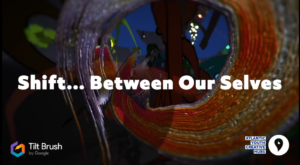
‘Shift’ was an EU and HLF funded project with Plymouth Social Services Atlantic Youth Hub, Fotonow, Igneous Interactive and artist Harley Morgan, which worked with young people from Plymouth’s LGBTQ community. The week long workshop proved to be a positive experience for all involved and has already generated discussions for further development and expansion across the South West. It follows on from underpinning research with Prof Ann John at Swansea Medical School in the ACW funded ‘Virtual Embodiments’ pilot https://www.kareningham.org.uk/virtual-embodiments/
In other news I recently returned from my second trip to Japan where I researched new pieces of work for ‘Deluge’ and met with curators and artists with a view to returning in 2020 to exhibit and form new collaborations in Tokyo, Kyoto and Nogoya.
October 2019
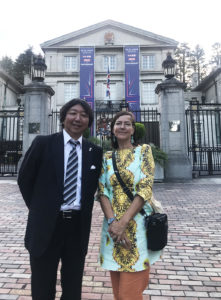
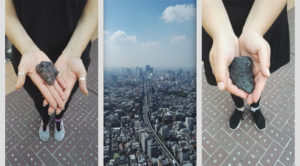 Two important and exciting developments. I’ve just returned form a one week trip to Tokyo as part of a British Council, Arts Council Wales, and Welsh Government Trade and Cultural Delegation, part of the 2019-20 Japan – UK Year. My mission was twofold: to work with Arts Council Wales to scope new opportunities and partnerships between Wales and Japan around arts, health and wellbeing and to research new contacts, collaborations and exhibition opportunities for my lens-based arts, and digital textiles, particularly in relation to ‘Deluge’ https://www.kareningham.org.uk/deluge-2017-2020/ In a presentation at the Welsh Dome in Tokyo I worked alongside ACW’s Sally Lewis and Paul Kaynes of National Dance Company Wales as part of a Wales-Japan ‘Arts and Health Roundtable’, where in addition to discussing my own research I also presented the outstanding work of the Wales Arts Health and Wellbeing Network https://wahwn.cymru/about-us While in Tokyo I began a creative dialogue with Japanese artist Izuru Mizutani, an internationally exhibited and published artist whose practice is closely aligned to my own interests across art, science and the human condition. Izuru is also founder and director of The Art and Mind Centre at Nagoya University, and has prior experience of working with Welsh artists through a previous collaboration with Heather Parnell.
Two important and exciting developments. I’ve just returned form a one week trip to Tokyo as part of a British Council, Arts Council Wales, and Welsh Government Trade and Cultural Delegation, part of the 2019-20 Japan – UK Year. My mission was twofold: to work with Arts Council Wales to scope new opportunities and partnerships between Wales and Japan around arts, health and wellbeing and to research new contacts, collaborations and exhibition opportunities for my lens-based arts, and digital textiles, particularly in relation to ‘Deluge’ https://www.kareningham.org.uk/deluge-2017-2020/ In a presentation at the Welsh Dome in Tokyo I worked alongside ACW’s Sally Lewis and Paul Kaynes of National Dance Company Wales as part of a Wales-Japan ‘Arts and Health Roundtable’, where in addition to discussing my own research I also presented the outstanding work of the Wales Arts Health and Wellbeing Network https://wahwn.cymru/about-us While in Tokyo I began a creative dialogue with Japanese artist Izuru Mizutani, an internationally exhibited and published artist whose practice is closely aligned to my own interests across art, science and the human condition. Izuru is also founder and director of The Art and Mind Centre at Nagoya University, and has prior experience of working with Welsh artists through a previous collaboration with Heather Parnell.
I will be returning to Japan in November, travelling with artist Beate Gegenwart, and researching further links and opportunities in Tokyo and Kyoto. Immediately before heading to Tokyo I worked in Plymouth with Social Services Atlantic Youth Hub, Fotonow, and artist Harley Morgan on the virtual reality arts project ‘Shift’, with young people from Plymouth’s LGBT community.  The week long project was enormously rewarding and overwhelmingly well received. It follows on from underpinning research with Prof Ann John at Swansea Medical School in the ACW funded ‘Virtual Embodiments’ pilot https://www.kareningham.org.uk/virtual-embodiments/
The week long project was enormously rewarding and overwhelmingly well received. It follows on from underpinning research with Prof Ann John at Swansea Medical School in the ACW funded ‘Virtual Embodiments’ pilot https://www.kareningham.org.uk/virtual-embodiments/
Work is underway to edit a film of the project and publish an AR (augmented reality) app to accompany an e.publication. Atlantic Youth Hub and Fotonow hope to expand the project and embed it as a permanent feature of the Plymouth arts, health and wellbeing strategy.
August 2019
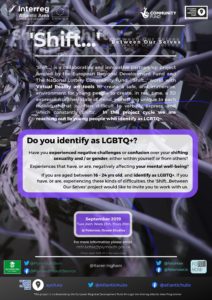 Gearing up for the collaboration with Plymouth Youth Service, Atlantic Youth Creative Hubs and Fotonow in Plymouth for the EU Intrreg/National Lottery funded ‘Shift: Between Our Selves’ project. This virtual reality youth mental health project follows on from previous youth arts and mind research such as ‘States of Mind’ (2015) and ‘Virtual Embodiments’ (2017) and will focus on working with young people in the Plymouth LGBTQ+ communities. Three days of workshops will be followed by a film, stills and social media outputs shared as part of Plymouth Art Weekender. More to follow.
Gearing up for the collaboration with Plymouth Youth Service, Atlantic Youth Creative Hubs and Fotonow in Plymouth for the EU Intrreg/National Lottery funded ‘Shift: Between Our Selves’ project. This virtual reality youth mental health project follows on from previous youth arts and mind research such as ‘States of Mind’ (2015) and ‘Virtual Embodiments’ (2017) and will focus on working with young people in the Plymouth LGBTQ+ communities. Three days of workshops will be followed by a film, stills and social media outputs shared as part of Plymouth Art Weekender. More to follow.
June 2019
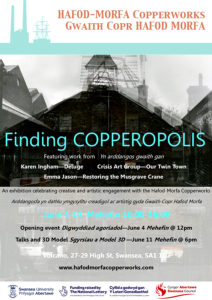 The collaboration with Swansea University’s Copperopolis project has come to an end with an exhibition and series of public engagement events at Volcano in Swansea. The project is linked to ‘Deluge’ through the ‘deep mapping’ workshops, which may well continue with new participants in new locations as ‘Deluge’ moves into its next iteration in Dublin next year.
The collaboration with Swansea University’s Copperopolis project has come to an end with an exhibition and series of public engagement events at Volcano in Swansea. The project is linked to ‘Deluge’ through the ‘deep mapping’ workshops, which may well continue with new participants in new locations as ‘Deluge’ moves into its next iteration in Dublin next year.
Other news is that I have been selected as one of the artists for the 2019 Svalbard Seed Bank project ‘AGRI CULTURES’, with images from ‘Of Plant and Insect’ (Deluge) and Cross Pollination (AHRC) being included in the international selection for the Seed Cultures Archive.
April 2019
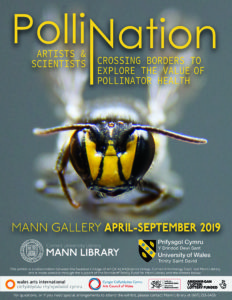
The international group exhibition ‘PolliNation’ (formerly CrossPollination) has opened in New York at the Mann Gallery in Cornell University. I am showing my hoverflies bio-mimicry digital textiles collaboration (with National Botanic Gardens of Wales) and my film collaboration (with Dr. Sarah Beynon) ‘Less Is More’, focusing on the need for less intensive farming practices to save pollinator rich meadows and herbal lays. The exhibition will run until September and discussions are underway to try and secure funding for the design of a multi-modal pollinator garden at Cornell. https://pollination.home.blog/
February 2019
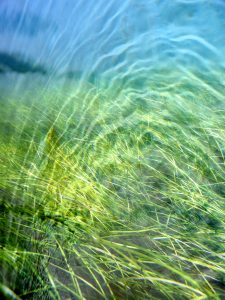
Quick update to confirm that the next iteration of the international group exhibition ‘Cross Pollination’ has a confirmed opening date of April 15th at the Mann Library and Gallery, Cornell University NY. More on this to follow. In the meantime, new and ongoing research for ‘Deluge’ is branching out to explore the role of sea grass meadows and soil biodiversity in relation to climate change.
I’ve been invited to give a talk on this as part of Swansea University’s Wallace Bio-Talks at the Wallace Zoology Museum on March 12th. Hopefully this will lead to some interesting new collaborations. I’m also continuing to work with marine biologists and researchers at the Centre for Sustainable Aquatic Research (CSAR) at Swansea, where I recently donated a number of plankton prints for long term exhibition loan.
December 2018
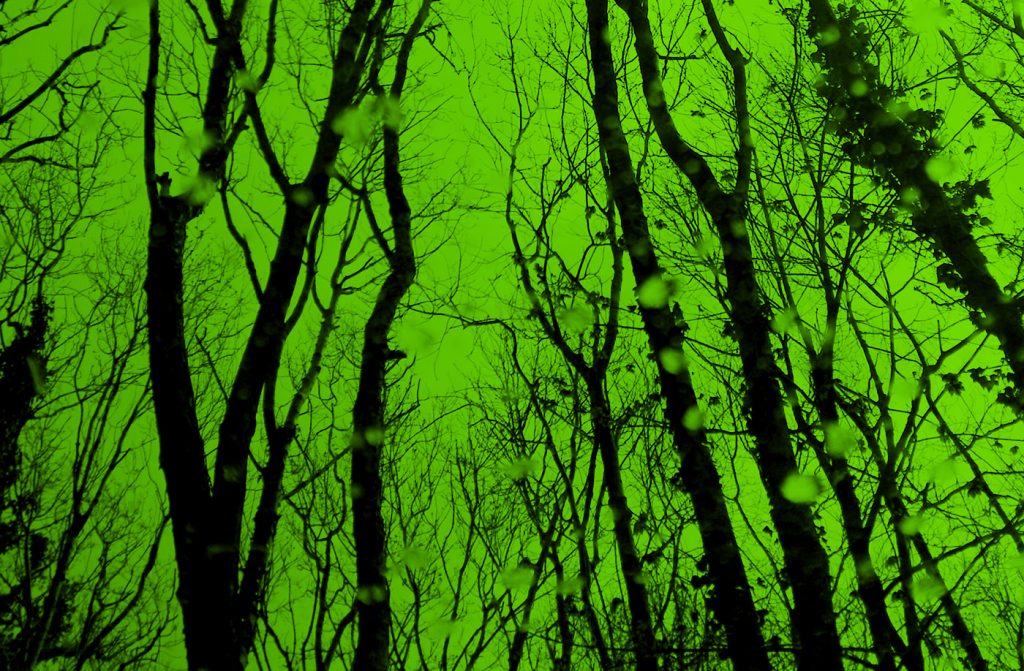
As the year ends so too does Deluge, or at least temporarily. There are already discussions underway to develop the project further in 2019 with the aim of establishing international collaborations and exhibitions working with project partners Prof. Mary Gagen and Milford Haven Port Authority. The Morfa Hafod Copperworks project will also be continuing next year as will the AHRC-Arts Council Cross Pollination project, which will be exhibited in New York in 2019. Until then…have a Green Christmas.
September 2018
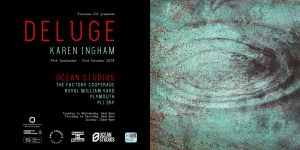
With project partner Fotonow, Deluge has opend at Ocean Studios in Plymouth where it will show for three weeks and is also part of Plymouth Art Weekender. New works include the film ‘Are You Ready (Can You Hear Me)’, and Fotonow have produced a beautiful catalogue with an introductory essay by climate scientist Prof Mary Gagen at Swansea University. There will be an artist’s talk and a podcast which, along with the film, will be linked to Fotonow’s website. Creating a dialogue between the interconnected locations and themes of Deluge, a sister exhibition is on show at Swansea Waterfront Museum (The National Waterfront Museum of Wales) and will run until early November.
Educational workshops are planned around the ‘Of Sea’ theme, which is in keeping with 2018 being The Year Of The Sea in Wales.
August 2018
Presented ‘Virtual Embodiments’ at The Edinburgh International Culture Summit 2018 at the Scottish Parliament as part of the Culture and Wellbeing policy round table. An extraordinary experience and a real honour to be invited to participate. https://www.culturesummit.com/people/
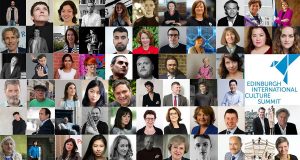
‘Deluge’ finishes at Milford Haven Port Authority and preparations are under way for the next exhibitions at Swansea Waterfront Museum and with Fotonow in Plymouth. Arts Council England has just awarded funding for the exhibition and a publication will be produced.
New Publication:
‘Living Images: The Body as Flesh, Form and Informatics’ in (2018) Becoming Image: Medicine and the Algorithmic Gaze (Ed) Liz Orton, 144 pages, ISBN-10: 1999675800
ISBN-13: 978-1999675806. The publication is a consolidation of the symposium (May 2018) of the same name at UCL in London.
July 2018
Deluge has moved to coastal St. Davids, Britain’s smallest city, and a new iteration of the project is on exhibition at Oriel y Parc in the Artist In Residence Tower. A selection of the artworks will be on show from 2nd July to 12th August and a public engagement event with National Park Authority ranger Ian Meopham will take place 5-6:30 on the 30th of July.
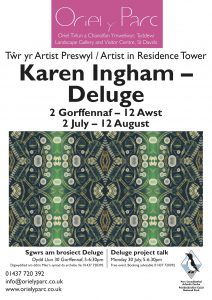
For more information about the event visit www.orielyparc.co.uk or call 01437 720392
May 2018
Deluge is now on exhibition at Craft In The Bay, the first of five inter-related exhibitions for the project over the coming months. As part of he public engagement activities we staged an ‘art and climate science’ walk and talk event with climate scientist Prof. Mary Gagen from Swansea University, and I will be posting a video of the event shortly. Both Mary and I spoke about the subtle narratives that are embedded in the artworks in the exhibition, and the global ripple effect of our human actions, not just on our oceans but in relation to many of our complex and fragile ecosystems. Other events are planned for the exhibition, which finishes on June 25th.

March 2018

Just before the recent spell of freezing weather I had a fantastic visit to CSAR (the Centre for Sustainable Aquatic Research) with Dr. Mary Gagen, where Craig Pooley and Paul Howes showed me around the facilities and discussed the Centre’s plankton research. I came away with two bottles of local phytoplankton, which I’m using as a medium for ‘painting’ onto my plankton designs (fabric and paper). I’ll monitor the results over several weeks to see how the plankton fades and reacts to light and environmental conditions.
This was followed by a boat trip in Swansea Bay to actually collect and monitor local plankton. I joined skipper Keith, first mate Matt, and researchers Fred Batista and Sophie Ellis on the Nautica, Swansea Universities marine research vessel. The conditions were excellent and it was fascinating to observe the process from a number of key locations around Mumbles. Over the coming weeks I’ll continue to work with my new research colleagues with the aim of collecting a larger and more varied selection of plankton, which can then be directly incorporated into the making process for the Deluge artworks.

February 2018
Deluge is now entering in full production mode with all of the partnerships and exhibition dates confirmed. An exciting new development is the collaboration with climate scientist Dr. Mary Gagen at Swansea University, a world leading climate change researcher and public engagement activist. Mary and I are now working with colleagues in the Centre for Sustainable Aquatic Research, CSAR, a centre of excellence founded in 2003 with support from the European Union, Welsh Government, and Swansea University. CSAR is designed for applied research on a diverse range of aquatic organisms, from temperate to tropical and marine to freshwater environments and they are assisting and advising on the collection of plankton, a key focus of the Deluge project. Of the three interconnected elements of the project – Of Earth and Elements, Of Plant and Insect, Of Sea – Of Sea is of particular interest to collaborators as 2018 is The Year Of The Sea in Wales.
Craft In The Bay, which launches the project in May, will be the first to exhibit the new body of ‘planktonic digital textiles’, some of which use actual plankton dye within the designs. https://www.makersguildinwales.org.uk/whats-on/exhibition/event/599-deluge-solo-exhibition-by-karen-ingham
July 2017- Update on New projects and Exhibitions
A busy year so far with the Cross Pollination exhibition launching at The National Botanic Gardens of Wales. https://crosspollinationartsciencecollaboration.wordpress.com
I have two pieces in the exhibition, a textiles series on the bio-mimicry of Hoverflies and a short film on the threat of intensive farming to pollinators.
March saw the completion of Virtual Realities (formerly ‘Darkness Enlightened’). This pilot project with funding from Arts Council Wales and Swansea Medical School demonstrated strong evidence for the effectiveness of using an arts-led research methodology in a VR environment to help young people better understand and deal with their mental health issues. The outcomes were shared in a public forum accompanied by an exhibition (photography, film, 3D printed objects) at ALEX in Swansea. We also presented our findings at three international conferences including The First International Storytelling for Health Conference. The project will be included in the September Swansea Science Festival at the Waterfront Museum and has just won a prize as part of Swansea University’s ‘Research as Art Competition’. Over the coming months we will continue to disseminate the research and evaluate the possibilities for further development.
A major new development is DELUGE (2017-18), which was successful in gaining funding support from Arts Council Wales.This 18 months visual arts project is interdisciplinary, multi-partnered, multi-sited and has a strong public engagement programme. Initially focused on coastal areas in South Wales and South West England, Deluge is a conceptual, allegorical and material journey that explores how we’ve arrived at the Anthropocene (our current geological age where human activity is the major factor in global instability). Deluge focuses on the consequences of ‘a tide of globalization’ by alluding to global contexts through a local lens. The project has strong connections with Swansea, the birthplace of globalization as we understand it today. The Vivian’s were originally from Truro and the links between the South Wales and South West peninsulas, founded on copper and coal, share similar challenges, the focus of the collaboration with Fotonow in Plymouth and with the Morfa-Hafod Copperworks Digital History project with Swansea University.
In development for over a year, Deluge has strong partner support from Craft In The Bay in Cardiff, the Morfa-Hafod Copperworks Digital History project at Swansea University, Oriel y Parc in St. Davids, Fotonow in Plymouth, and Milford Haven Port Authority.
Deluge is structured around three inter-connected strands:
Of Earth and Elements
Of Plant and Insect
Of Sea
BRAINSCAPES, MIND-MASKS and STATES OF MIND
Commissioned article in: Interalia Art and Science Magazine -‘Memory Networks’ Issue 27 September 2016. Co-editors Richard Bright, Director of Interalia Centre and Magazine and Julia Buntain, Director of The SciArt Centre New York
http://www.interaliamag.org/articles/karen-ingham-brainscapes-mind-masks-and-states-of-mind/
DARKNESS ENLIGHTENED (2016-17)
Arts Council Wales funding for new Research & Development project Darkness Enlightened with Dr. Ann John, Swansea University Medical School
We are experiencing a mental health crisis. There’s growing evidence that more creative and less prescriptive (and prescribed) methods are needed. A group at high risk of depression and suicide in Wales and the UK are young people, particularly young men and students. The visual arts have the ability to communicate in a way that verbal expression does not, important when dealing with individuals and groups that find language difficult, for example adolescents communicating subjective conditions such as depression or anxiety. Darkness Enlightened will explore immersive role playing experiences – online, offline and tabletop – for example World of Warcraft, Dungeons and Dragons, and The Elder Scrolls Skyrim, which allow players to create and identify with their unique virtual avatar, often an idealized version of themselves that they use to combat or banish their insecurities and ‘monsters’. We aim to utilise these types of gaming experiences to test if we can use digital media – fully immersive virtual 3D painting tools, 3D printing, and digital photography – to help participants recognise, articulate, and visually represent their own unique ‘depressive monster’. We will explore if these representations can be used as ‘affective objects’ – an object that transfers emotional data for the owner – by using 3D printing technologies. The project is underpinned by Dr. John’s world-leading research into youth mental health alongside Ingham’s international track record of working across art and science. Through the dual lens of art and medicine we will research, develop and evaluate new arts-based approaches to tackling depression and suicide in young people and share our research through an exhibition, two public forums and online media. Project partners include Abertawe Bro Morgannwg University Health Board and Swansea College of Art and Design.
Pollinator Frocks
at 2016 British Science Festival (September 2016)
“Fashion meets conservation in The Pollinator Frocks Project, a limited edition collection of textile designs and clothing based on up-close images of plant pollen grains linked to endangered pollinators”.
https://www.britishsciencefestival.org/event/uplands-after-dark
Pollinator Frocks (http://kareningham.org.uk/portfolio/science-art-technology/pollinator-frocks ) is part of the 2016 British Science Festival, which is being hosted by Swansea University where I am currently an Honorary Fellow in the Medical School. Part of ‘Uplands After Dark’, I will be demonstrating how art and science collaborations can lead to new forms of public engagement for important issues around plant-pollinator threat and decline. After an internationally successful year of exhibitions, performances, screenings, workshops, and conferences, the project was archived in 2012 until further time and funds were available to develop it. This next development phase is now looking much closer with the next 12-24 months seeding new research and exhibitions around the theme of re-valuing and re-conceptualising insect pollinators and their host plants.
The initial platform for this research is the Arts and Humanities Research Council funded ‘Re-valuing Pollinators Through Arts and Science Collaboration’ working with project lead Prof. Andrea Liggins (Swansea School of Art and Design UWTSD) and co-investigator Prof. Mike Christie, Professor of Environmental and Ecological Economics (Aberystwyth University). I will be developing and expanding research, methods and approaches that I first explored in 2011 with the first Pollinator Frocks project.
I will be working on two main projects, the first with National Botanic Garden of Wales and scientists Dr. Natasha De Vere and Andrew Lucas. This collaboration will explore the ‘forgotten pollinators’ – Hoverflies – and their amazing ability to use bio-mimicry to impersonate other similar pollinators such as bees and wasps.
Project One – Hoverflies and Bio-Mimicry Masquerading (Hoverflies and Their Habitats Collaboration) https://crosspollinationartsciencecollaboration.wordpress.com/hoverflies-bio-mimicry-masquerading/
Project Two – When Less is More, is part of the ‘Farming and Environmental Policy Collaboration’, with scientists Dr. Sarah Beynon, Prof. Mike Christie, Duncan Coston, Professor Simon Potts and Dr. Tom Breeze from Reading University, Dr. Sophie Bennett, Sinead Lynch and Dr. Paul Thompson. The collaboration will use a filmic approach to question how two different farming environments – one a species rich, minimally managed parcel of land and an equivalent area that is intensively managed and species specific – attract, interact with, and sustain pollinators.
As the summer ends so too does my Arts Council Wales-Confluence commission Pembrokeshire Drovers, which finishes its six weeks exhibition at Oriel y Parc (The Park Gallery) in St. David’s on 9th of September (following on from the Haverfordwest programme of activities):
https://studiowestorguk.wordpress.com/2016/09/12/drovers-film-online/
New Moving Image Commission:
Pembrokeshire Drover (2015-16)
Located in Haverfordwest Confluence is a creative collaboration between PLANED, spacetocreate, iDeA Architects, Pembrokeshire County Council and Transition Haverfordwest. Confluence has been awarded funding from Ideas: People: Places, an Arts Council of Wales strategic initiative that seeks to test new models of regeneration and collaboration through the arts. Pembrokeshire Drover will be a socially engaged, site responsive moving image artwork that draws on and reflects upon the interrelationships between Haverfordwest and the rural and coastal hinterland it serves. It will be screened and performed in Haverfordwest and Oriel Y Parc from July 2016. An artists blog for the project can be found here:
https://studiowestorguk.wordpress.com
Recent and Touring:
Homesick – new body of semi-autobiographical photographic and film work about the trauma of extreme homesickness in ‘Towards America: Home Sweet Home’, at the Diffusion: Cardiff International Festival of Photography, Cardiff, October 2015 (and touring).
http://diffusionfestival.org/artists/karen-ingham
Presentation and exhibition of Facescapes and Physiognomic Landscapes at the Aarhus (Denmark) Creative Practice: Making Research Conference (September 2015), a multi-disciplinary collaboration exploring face blindness (prosopagnosia), architecture and neuroscience. Follows on from Facescapes in Crafting Anatomies: Performance, Materials, Identity, exhibition and symposium, Bonnington Gallery, Nottingham, January 2015: Symposium 30th January; further development and chapter in book forthcoming.
http://www.boningtongallery.co.uk/coming-soon/crafting-anatomies
http://adapt-r.eu/creative-practice-conference-aarhus/
January – June 2015: Working with Ben Koslowski,Roberto Bottazzi and team as part of the RCA-AHRC Creative Exchange collaboration with FACT Liverpool on ‘States of Mind’ in the exhibition ‘Group Therapy: Mental Distress in a Digital Age http://www.fact.co.uk/projects/group-therapy-mental-distress-in-a-digital-age.aspx The project is ongoing with a presentation at the (2015 Dublin) Digital Research in the Humanities and Arts conference. To hear project partners Ben Koslowski and Brendan Dawes discuss the project go to: https://vimeo.com/122330273
January – May 2015: Commissioned by Cape Farewell and Swansea Bay Tidal Lagoon to develop a site-specific sculptural response for the proposed Swansea Bay Tidal Lagoon. I will be developing a design based on the importance of plankton in relation to a sustainable marine ecosystem and the global carbon cycle. The commission follows on from a two years involvement with Cape Farewell and the SBTL project.
http://www.capefarewell.com/latest/projects/tidal-lagoon.html
Recent:
Crafting Anatomies: Performance, Materials, Identity, exhibition and symposium, Bonnington Gallery, Nottingham, January-Feb 2015: Exhibitor and Symposium speaker.
Make Shift, Crafts Council England – a new biennial conference exploring how advances in materials, technologies and processes are driving innovation and imagination across art, science and medicine – 20th-21st November, Ravensbourne, Greenwich: contributor to Making For Medicine panel http://www.craftscouncil.org.uk/what-we-do/makeshift
LISTEN: Crafts Council Make Shift and Resonance FM: http://www.craftscouncil.org.uk/what-we-do/makeshift/
Episode 10: Bronac Ferran addresses the growing involvement of artists, craftspeople and designers in medical research and development scenarios with guests Gina Czarnecki, Matt Durran, Dr Karen Ingham and Rhian Solomon.
Recent Publications:
‘Between: Intersections in Art and Science in the Practice of Two Contemporary Artists’ (Co-author Susan Aldworth) in Art, Science and Cultural Understanding,
Brett Wilson, Barbara Hawkins and Stuart Sims (Eds), The Arts in Society Book Series, Common Ground Publishing (2014) http://theartsinsociety.cgpublisher.com/product/pub.192/prod.16
Dec 2013-March 2014
(PRESS RELEASE)
Professor Karen Ingham part of the AHRC-RCA design team behind the new ‘Hybrid Lives’ co-working space at Liverpool FACT
Professor Karen Ingham of UWTSD-Swansea is the only Welsh academic involved in the AHRC ‘Creative Exchange’, a multi-million pound project that brings together creative sector businesses and connects them with digital designers, major corporations and leading researchers in the Arts and Humanities. The major theme of the project is Digital Public Space. Ingham has been working alongside CX-PhD research students at the Helen Hamlyn Research Centre at the RCA, and they have designed and installed a prototype co-working space, ‘Hybrid Lives Co-Working Space’ as one of the major components of the international exhibition ‘Time and Motion: Re-defining Working Life’ at FACT (Foundation for Art and Creative Technology) Liverpool. The exhibition runs from December 2013 to March 2014 and then tours internationally. There is also a publication from Liverpool University Press that accompanies the project. In addition to working on the conception, design and delivery of the interactive data tables for the space, a series of original video works were also produced, including a ‘hybrid’ live feed of the space that is layered with historical archive footage of working life. Co-designer and project leader John Fass says of the work:
“Karen Ingham created a video composition that montages a live feed of the space with archive footage of machines and factories. The piece evokes an intriguing tension between what we may think of as informal or improvised computer work (that done in a co-working space) and a reading of work as highly regulated, time constrained and machine like. Some of the questions the artist prompts is: are we as controlled by our machines as an early 20thC factory worker? Where is the human located in the de-centered virtual workplace?”
To see the space and hear co-designer John Fass speak about the project go to:
http://www.youtube.com/watch?v=iGV4_czRusU
To learn more about the project and the AHRC CX go to: http://www.thecreativexchange.org/activity/hybrid-lives-fact
April 2012
‘Between: Embodiment & Identity’ opens at Somerset House East Wing – April 18th to June 30th
“How do we define the ‘self’ in an age of increasing materiality? The philosophical tensions between what we are and how we think, between human embodiment and identity, is being radically redefined by advances in anatomical knowledge and the brain sciences. At the same time, visual imaging techniques make this knew knowledge visible and explicit, conferring huge explanatory power onto digitized medical imagery. BETWEEN both celebrates the richness of such scientific research and presents works that collectively challenge technology’s entitlement to mediate form. Exhibiting together for the first time, and working in collaboration with King’s neurobiologist Dr Richard Wingate from the MRC Centre for Developmental Neurobiology, artists Susan Aldworth, Andrew Carnie and Karen Ingham present works that cross-reference contemporary science, digital imaging techniques, philosophy and the humanities, to explore emerging and enriched images of the Self.”
March 2012
Wonder Chamber has just opened at one of the UKs leading organizations for photography and lens-based arts, Ffotogallery, and will be on exhibition from 9th of March to 14th April 2012. Wonder Chamber includes new and previously un-exhibited art works in addition to the consolidation of projects that have been in development for the past few years. A publication accompanies the exhibition and is available from Cornerhouse Publications: http://www.cornerhouse.org/bookstore/product/wonder-chamber-karen-ingham
February 2011
The Pollinator Frocks Project (PFP) has just returned from New Zealand where it was part of the Eco Sapiens SCANZ event. A link to the SCANZ website with all of the details is on the PFP project page. Video clips from the SCANZ residency and exhibition, which included performative public video ‘walk abouts’ in Pukekura Park and Botanic Gardens, can be viewed on You Tube:
Monarch on Pollinator Frock New Zealand (Jan 2011-SCANZ performance extract)
Thanks to Wales Arts International who supported the SCANZ residency, exhibition and symposium.